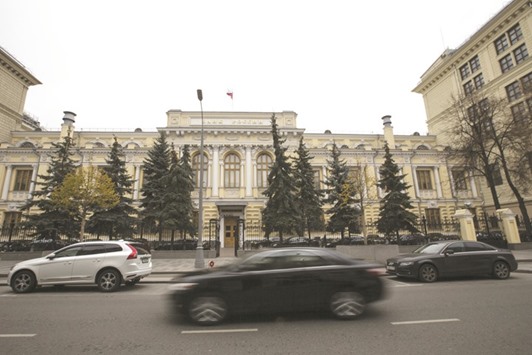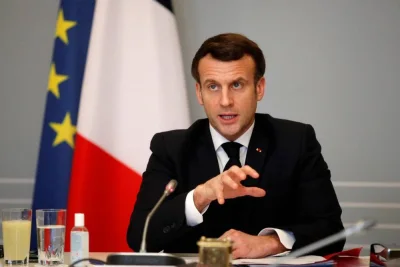Consider it a subplot to what may be this year’s most contentious rate decision in Russia.
At centre stage is the familiar sight of Governor Elvira Nabiullina staring down inflation. The central bank took the unusual step of showing its cards ahead of time, with the head of its monetary policy department, Igor Dmitriev, saying a hold and reductions of 25 to 50 basis points in the 10% benchmark will be under consideration on Friday. Only last month it warned the potential for easing in the first half has “diminished.”
But the meeting also marks the most tightly contested decision among forecasters since last July, with some of the world’s biggest banks divided over policy makers’ readiness to pull off their first rate cut in six months. While JPMorgan Chase & Co moved up its call for the year’s first decrease to this week from June - and now predicts a reduction of a quarter point - Goldman Sachs Group sees a pause for another month. Credit Suisse Group is among three of the 40 participants in a Bloomberg survey to see a cut of half a point.
The split goes to the heart of the dilemma facing the central bank. While price growth near historical lows makes the case for easing obvious, the disagreement is over the best timing to loosen policy as inflation expectations remain elevated. Although the Bank of Russia moved in 50 basis-point steps for its last three reductions, it may switch to quarter percentage-point decreases, which is more typical for countries where inflation isn’t high, according to First Deputy Governor Ksenia Yudaeva.
“Low inflation momentum and strong currency have opened space for a more front-loaded easing path and the central bank needed to untie its hands by preparing the market for a more dovish shift,” JPMorgan analyst Anatoliy Shal said in a report, pointing to Dmitriev’s comments. The expectation now is that the central bank will “move in 25 basis-point steps at (nearly) every meeting, not in 50 basis-point steps at every second meeting.”
Of the four most accurate forecasters, three - B&N Bank PJSC, HSBC Holdings and Renaissance Capital - predict no change. Forward-rate agreements signal 49 basis points of decreases in borrowing costs over the next three months, the most since late January. The rouble is up 3% against the dollar since the central bank’s last rate meeting on February 2. “There is room to reduce the policy rate but we do not see any reason for the Russian central bank to rush at the current juncture,” HSBC currency strategists Murat Toprak and Dominic Bunning said in a report. “The priority has to remain on inflation, whilst economic activity is moving in the right direction anyway. The fact that inflation expectations are still high and the oil price is weaker call for prudence.”
The Bank of Russia has said a “moderately tight” stance is needed to bring inflation to its 4% target at end-2017. While the central bank’s research and forecasting department conceded this month that price growth has begun to slow “faster” than forecast, it only saw grounds for “very gradual” monetary easing.
After their February meeting, policy makers said the letup in prices “is partially attributed to temporary factors,” including a bumper crop and a stronger rouble exchange rate. It’s an argument they may use again this time, especially as inflation expectations, a key concern for the central bank, rose in February.
Russian inflation puts rate cut in play, central banker says
Despite the prevailing consensus among economists, monetary easing in Russia remains a question of when, not if. The choice this month is between a “dovish on-hold” and a “cautious 25 basis-point” cut, according to Dmitry Polevoy, an economist at ING Group who predicts no change.
Goldman Sachs sees “ample room” for a rate cut already while still undershooting the central bank’s price target. Yet after all but ruling out easing this half at their last meeting, policy makers have less room to act in March, Goldman Sachs economists including Clemens Grafe and Andrew Matheny said in a report.
“While we think there are sufficient grounds for a cut in this meeting, we think the Russian central bank has emphasised repeatedly that it wants to be predictable,” they said. It will “use its March meeting to signal the start of a new cutting cycle in April.”

Vehicles pass in front of the headquarters of Russia’s central bank in Moscow. The Bank of Russia has said a u201cmoderately tightu201d stance is needed to bring inflation to its 4% target at end-2017.


